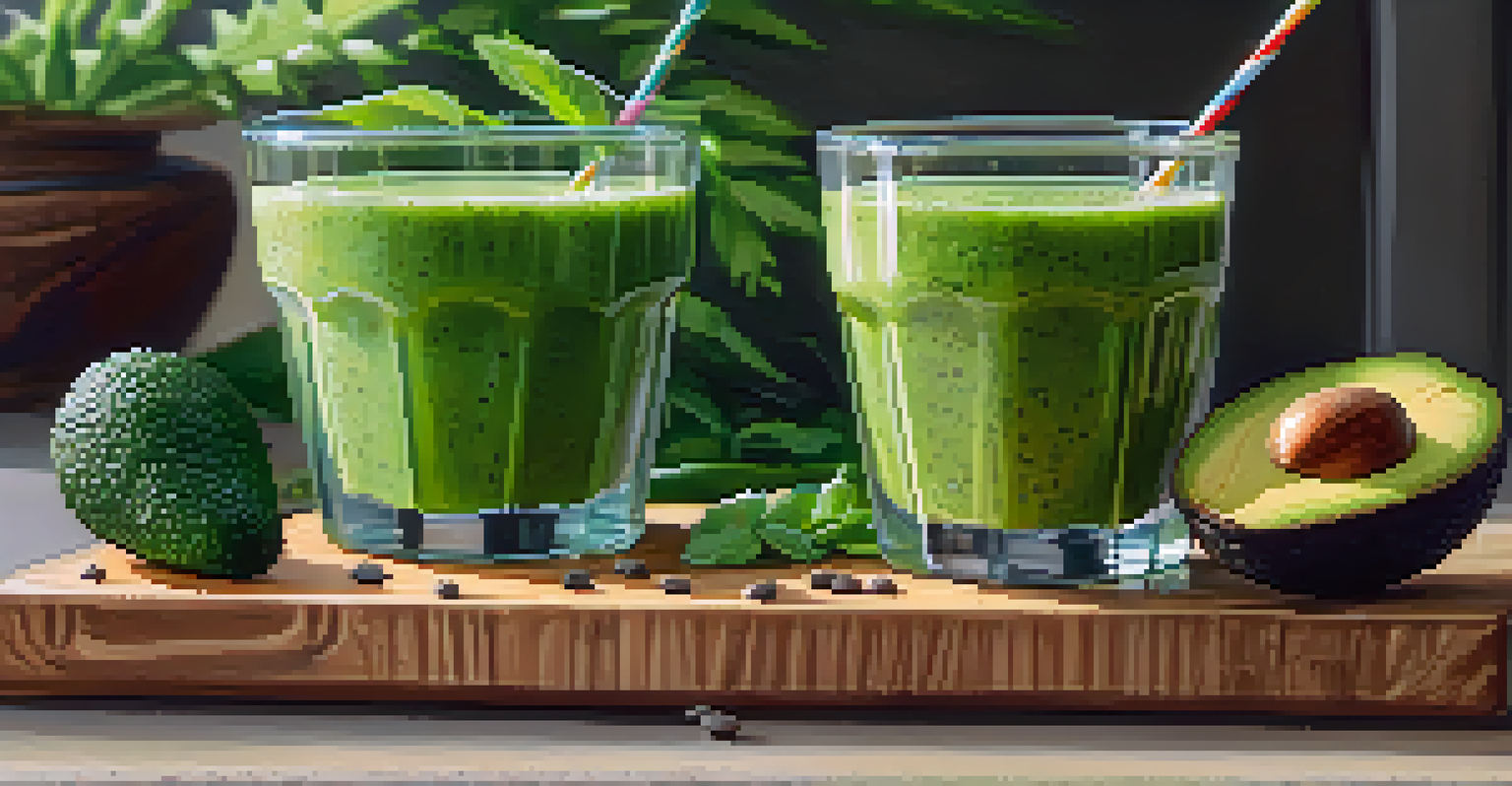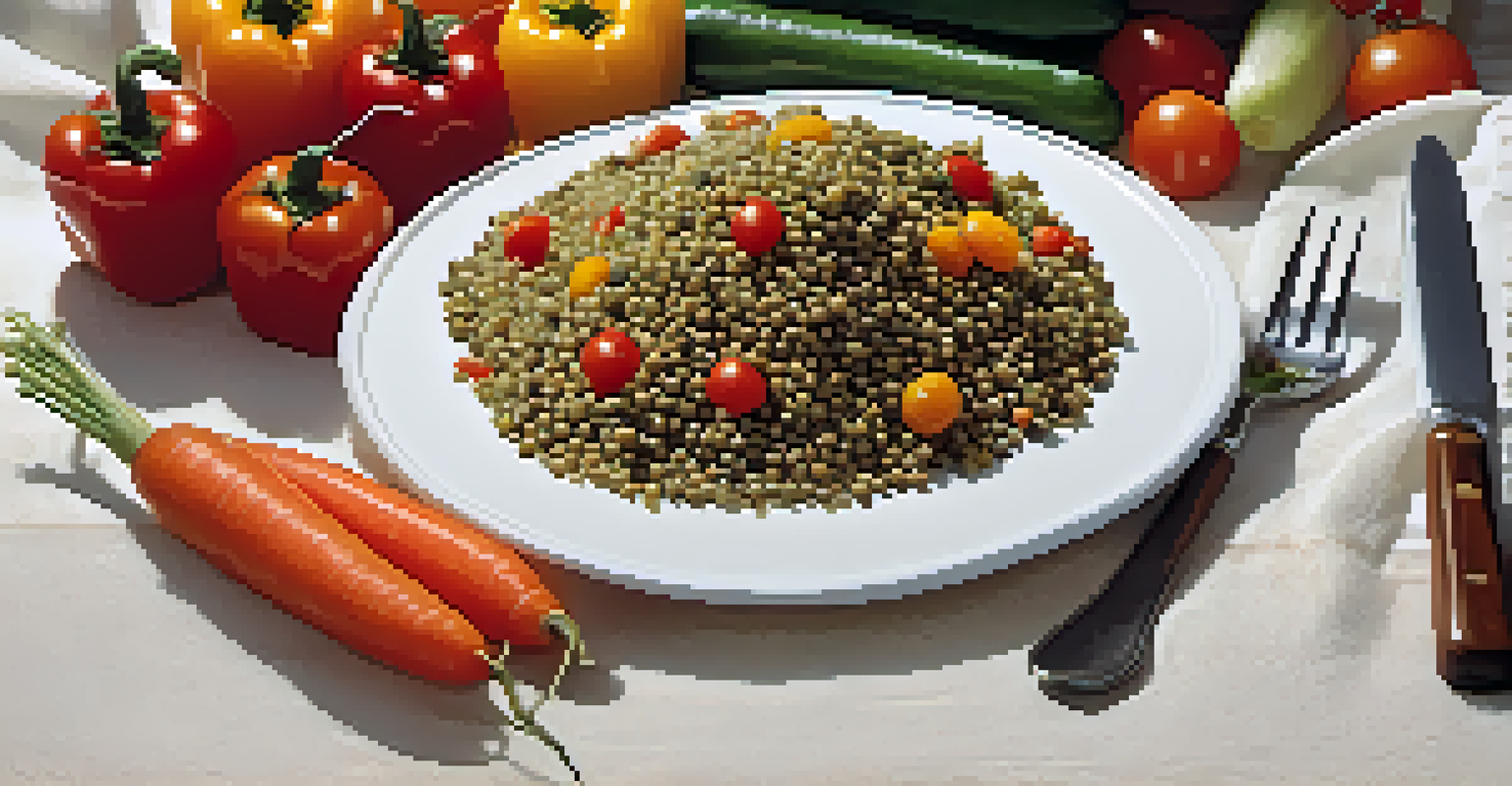Raw Food Diets: Truth About Essential Nutrients You Need

What is a Raw Food Diet and Its Basics
A raw food diet consists mainly of unprocessed, whole foods that are either uncooked or heated below 118°F. This includes fruits, vegetables, nuts, seeds, and sprouted grains. The idea is that cooking food can destroy vital nutrients and enzymes, which are essential for optimal health.
Let food be thy medicine and medicine be thy food.
Many raw food enthusiasts believe that consuming food in its natural state can lead to improved digestion, increased energy levels, and better overall health. However, it's essential to understand that not all nutrients are preserved through raw consumption. Some may even require cooking for better absorption.
While the raw food diet can be appealing for its health benefits, it's crucial to approach it with balanced knowledge. Understanding what nutrients might be lacking can help you make informed choices that enhance your well-being.
Essential Nutrients and Their Sources in Raw Diets
In any diet, essential nutrients like proteins, fats, vitamins, and minerals play a crucial role. In a raw food diet, fruits and vegetables provide many vitamins and minerals, but it can be tricky to get enough protein and healthy fats. Nuts, seeds, and legumes are excellent options that can help fill those gaps.

For instance, hemp seeds and chia seeds are fantastic sources of omega-3 fatty acids, which are vital for heart health. Meanwhile, dark leafy greens like spinach and kale are rich in iron and calcium, but they often require pairing with vitamin C sources to enhance absorption.
Raw Food Diet Basics Explained
A raw food diet focuses on unprocessed, whole foods that are uncooked or heated below 118°F to preserve nutrients and enzymes.
It's important to consider variety in your food choices to ensure you're getting a full spectrum of nutrients. Rotating your selections can also prevent dietary boredom while maximizing health benefits.
Protein: The Building Block of a Healthy Diet
Protein is essential for building and repairing tissues, and it plays a role in immune function. For those on a raw food diet, getting enough protein can be a challenge since many traditional protein sources like meat and dairy are excluded. However, there are plenty of plant-based options available.
Eating raw foods is the most natural way to nourish our bodies.
Foods such as quinoa, tofu, and sprouted lentils can contribute significantly to your protein intake. For instance, quinoa is a complete protein, meaning it contains all nine essential amino acids, making it a perfect addition to a raw diet.
Incorporating a variety of protein sources is key to meeting your daily needs. Smoothies with nut butters or raw protein powders can also be a delicious and easy way to boost your intake.
Healthy Fats: Importance in a Raw Food Diet
Healthy fats are another crucial component of any balanced diet, as they support brain health and hormone production. In a raw food diet, you can find healthy fats in avocados, nuts, and seeds. These foods not only provide essential fatty acids but also add flavor and texture to meals.
For example, adding a scoop of almond butter to your smoothie or sprinkling chia seeds on your salad can enhance both taste and nutrition. The omega-3 and omega-6 fatty acids found in these foods are essential for your body's function.
Essential Nutrients in Raw Diets
While fruits and vegetables provide many vitamins and minerals, it's important to include protein and healthy fats from sources like nuts and seeds.
However, it's vital to consume fats in moderation, as they are calorie-dense. Balance is key; pair healthy fats with a variety of fruits and vegetables to create satisfying, nutrient-rich meals.
Vitamins and Minerals: The Unsung Heroes
Vitamins and minerals are often the unsung heroes of nutrition, but they are indispensable for overall health. In a raw food diet, colorful fruits and vegetables can provide a wealth of these nutrients. For instance, carrots are high in beta-carotene, which converts to vitamin A, while citrus fruits are rich in vitamin C.
However, certain vitamins, like B12 and D, can be challenging to obtain from raw food sources. B12, primarily found in animal products, is crucial for nerve function and the production of DNA. Those on a strict raw food diet may need to consider fortified foods or supplements to meet their needs.
To ensure you are getting a complete range of vitamins and minerals, aim for a colorful plate. The more variety in your produce, the better your chances of hitting those nutrient targets.
Hydration: A Key Component Often Overlooked
Staying hydrated is essential for overall health, and it's often overlooked in dietary discussions. A raw food diet naturally includes many water-rich foods such as cucumbers, watermelon, and leafy greens, which can contribute to your daily hydration needs. However, it's still important to drink water throughout the day.
Proper hydration aids digestion, nutrient absorption, and even skin health. When you consume raw foods, the fiber content increases, which can also require additional water intake to help with digestion.
Hydration and Nutrient Risks
Staying hydrated is crucial on a raw food diet, yet potential nutrient deficiencies and foodborne illness risks must be carefully managed.
Be mindful of your fluid intake, especially if you're increasing your raw food consumption. Keeping a water bottle handy can serve as a reminder to stay hydrated and support your body's functions.
Potential Risks and How to Mitigate Them
While raw food diets can offer health benefits, they also come with potential risks. Nutrient deficiencies, particularly in vitamins B12 and D, iron, and calcium, can occur if the diet isn’t carefully planned. It's crucial to monitor your nutrient intake and consider supplementation if necessary.
Another risk is the potential for foodborne illness since raw foods can harbor harmful bacteria. Proper washing and sourcing of fresh produce can help reduce this risk. It's also smart to keep an eye on food storage practices to maintain freshness.

Consulting with a healthcare professional or a registered dietitian can provide personalized guidance. They can help you create a balanced plan that meets your nutritional needs while enjoying the benefits of a raw food diet.